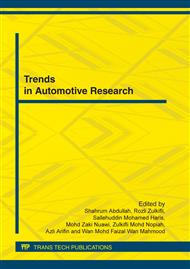p.209
p.214
p.219
p.224
p.232
p.237
p.242
p.247
p.252
Feature Selection for Fatigue Segment Classification System Using Elitist Non-Dominated Sorting in Genetic Algorithm
Abstract:
Having relevant features for representing dataset would motivate such algorithms to provide a highly accurate classification system in less-consuming time. Unfortunately, one good set of features is sometimes not fit to all learning algorithms. To confirm that learning algorithm selection does not weights system accuracy user has to validate that the given dataset is a feature-oriented dataset. Thus, in this study we propose a simple verification procedure based on multi objective approach by means of elitist Non-dominated Sorting in Genetic Algorithm (NSGA-II). The way NSGA-II performs in this work is quite similar to the feature selection procedure except on interpretation of the results i.e. set of optimal solutions. Two conflicting minimization elements namely classification error and number of used features are taken as objective functions. A case study of fatigue segment classification was chosen for the purpose of this study where simulations were repeated using four single classifiers such as Naive-Bayes, k nearest neighbours, decision tree and radial basis function. The proposed procedure demonstrates that only two features are needed for classifying a fatigue segment task without having to place concern on learning algorithm
Info:
Periodical:
Pages:
232-236
Citation:
Online since:
April 2012
Authors:
Keywords:
Price:
Сopyright:
© 2012 Trans Tech Publications Ltd. All Rights Reserved
Share:
Citation:


